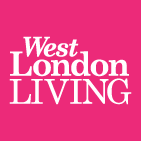Veins are blood vessels that are responsible for carrying the deoxygenated blood away from the body’s organs to the heart for oxygenation. Unlike arteries, veins consist of valves that are responsible for propelling the blood through their passages against gravity. At times, due to increasing pressure, these veins can swell up due to the excessive pooling of blood, particularly in the legs. This causes blue or purple discolouration of veins, thus leading to varicose veins.
Varicose Veins are engorged, enlarged, and tortuous veins that might cause pain and discomfort in specific parts of your body. Varicose veins appear as engorged purple cords, and usually – but not limited to – affect the legs with discolouration, itching, pain and discomfort. Mentioned below are 5 of the most popular myths that people believe are relevant enough to cause varicose veins.
1. Standing Still Can Affect the Venous Backflow in Your Legs
Most people believe that varicose veins are commonly due to excessive standing or staying in a stagnant position for long periods. While this is an irrelevant myth, staying in a single position can exacerbate the effects of varicose veins and lead to venous discolouration or ulceration in people with an already pre-existing condition.
2. Crossing the Legs Can Affect the Venous Backflow in Your Legs
People believe that the venous supply of their legs will get affected if they crossed their legs. While this external pressure is vaguely minimal, let’s slash this myth by concluding that varicose veins are caused by changes in internal pressure. This is primarily due to the challenges imposed on veins due to gravity and their weakened valves and walls.
3. Varicose Veins Only Affect the Calves
There is another myth which leads people into believing that varicose veins can only affect the legs. Unlike popular belief, varicose veins can also affect the areas around your pelvis or ovaries. This is why it is highly essential to get them identified and treated accordingly. Initially, due to outdated methodologies, identifying the root of the varicose veins seemed like an ordeal, which is why the condition kept on coming back. However, due to advancements in venous technology and diagnostic techniques, vascular surgeons cannot only identify the root of the problem but can also limit the recurrence by catering to promising treatment methods.
4. Varicose Veins Can Be Prevented
Varicose veins are mostly hereditary, and therefore, can occur in both the sexes. However, since varicose veins pertain to a familial trait, it is not necessary that all offspring will inherit the condition from their parents.
5. Varicose Veins Only Affect Women
Out of 30% cases of varicose veins in adults, approximately 56% of varicose is seen in men, contrary to popular belief. Since men believe varicose veins to be primarily cosmetic, they tend to ignore the signs and symptoms of the disease before it progresses and leads to severe complications such as leg ulcerations.
According to Dr Eddie Chaloner, pioneer of varicose vein treatments and expert vascular surgeon, women tend to escape the arduous complications of varicose veins primarily due to their concerns for their appearance.
There is another myth which states that pregnancy might cause varicose veins in women. However, this is the other way around. Women who already have varicose veins might witness apparent signs and symptoms of discomfort due to excessive blood flow in pregnancy. Varicose veins can be treated after delivery to prevent the condition in future pregnancies.
Dr Eddie Chaloner has also encouraged men and women to get treatments for their varicose veins by enticing them with non-invasive, out-patient surgical techniques. According to the vascular surgeon, around 85% of patients have been declared eligible and physically fit for treatment methods that pertain to the usage of lasers, radiofrequency and foam sclerotherapy.








